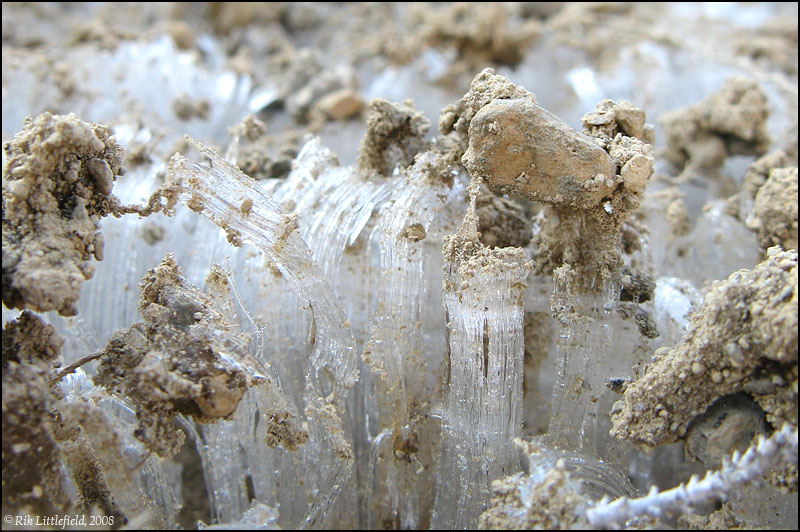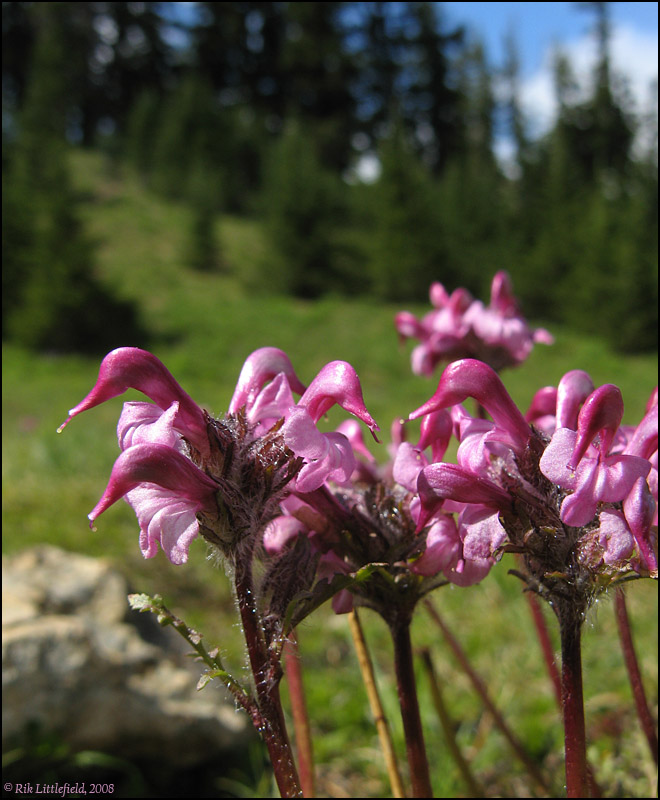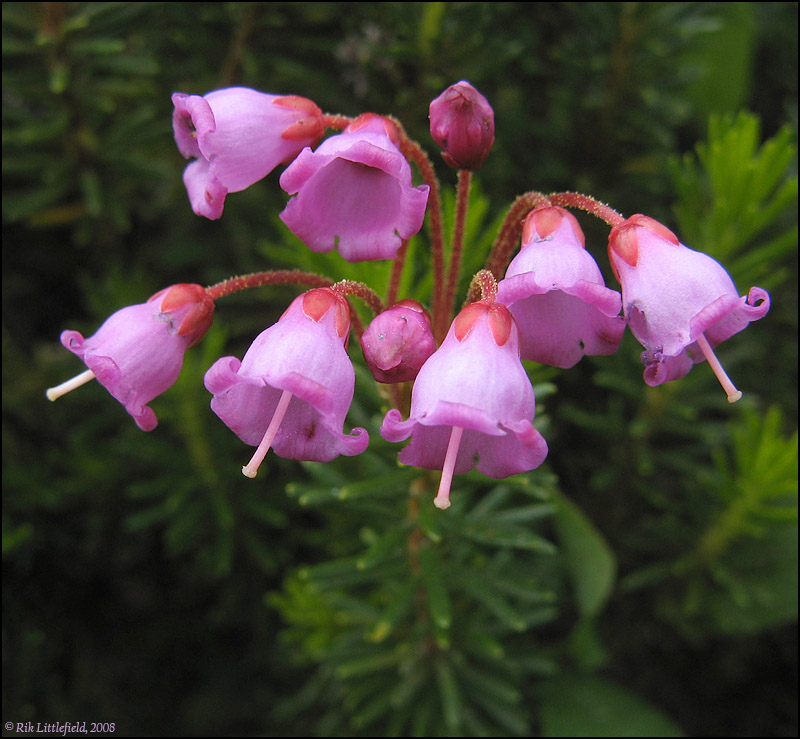Here is a close-up of the ice form. This is the same sort of Dirty Icing that Ken Ramos pictured back in January. I gather it's a special form of frost-heaving that forms when the ground is moist and the air is well below freezing. Ice forming on the surface attracts a thin film of water just below it. That film freezes, expands, pushes up the rest, and the whole process just proceeds continuously for as long as conditions allow. Small objects on the surface, like the pebbles shown here, just get carried along for the ride. These extrusions were a couple of inches tall.

Several hours later, and a couple hundred feet lower, these "lousewort" flowers were in fine shape. These are Pedicularis ornithorhyncha, commonly known as the "ducksbill" or "bird's beak" lousewort. They are closely related to Pedicularis groenlandica, the "elephanthead" lousewort, which is found in the same area earlier in the season -- see last picture here

And finally, some heather. I'm not sure exactly which species.

Hope you enjoy!
--Rik
Technical: Canon A710 IS camera, no accessories.
Edited to add, 2024 Jan 19: The ice form is more properly called "needle ice". There is a wikipedia page on it: https://en.wikipedia.org/wiki/Needle_ice .
